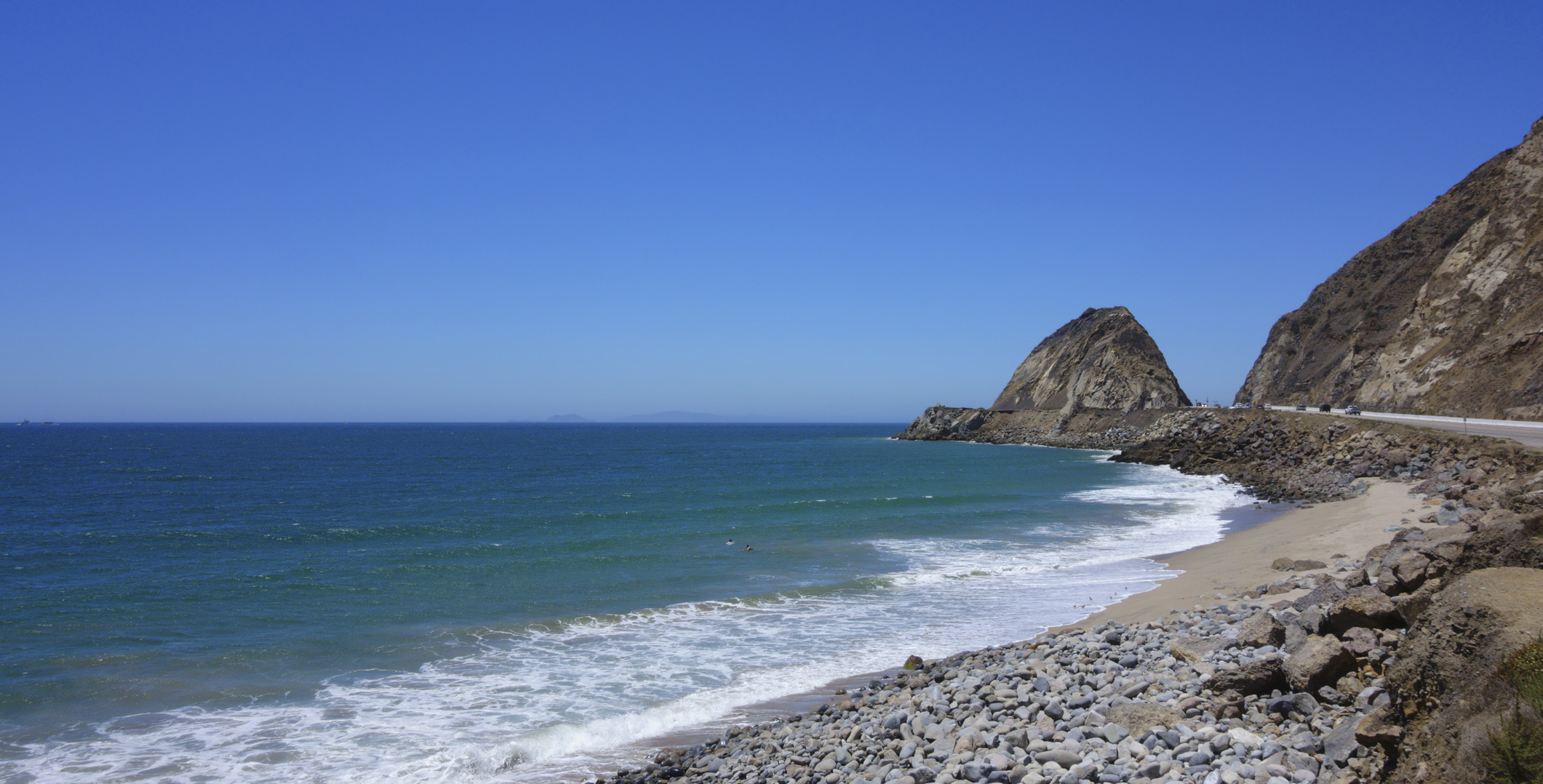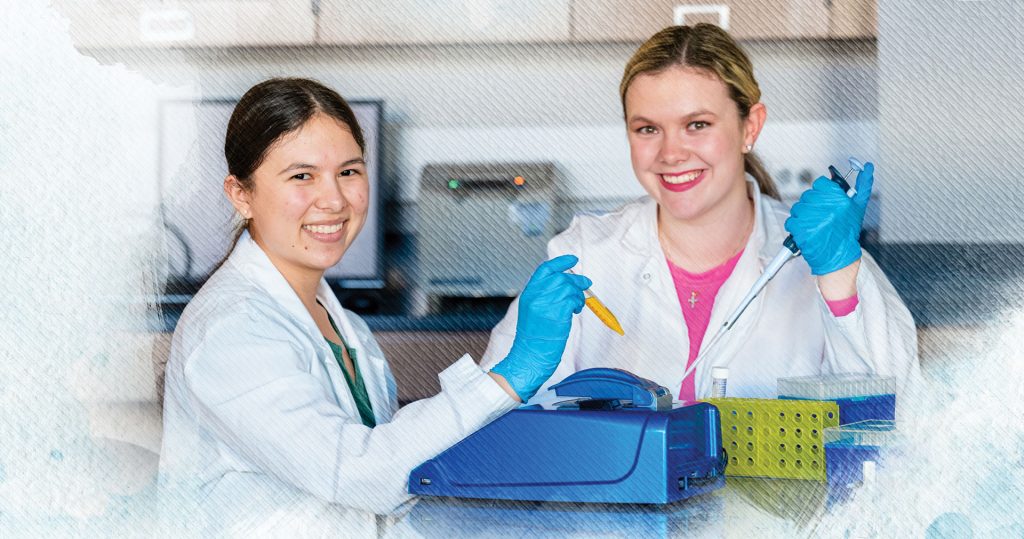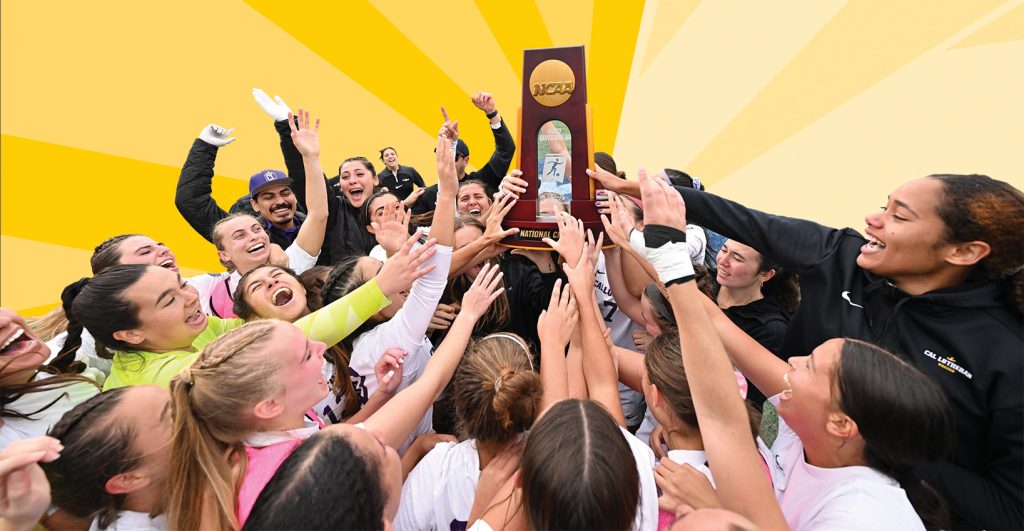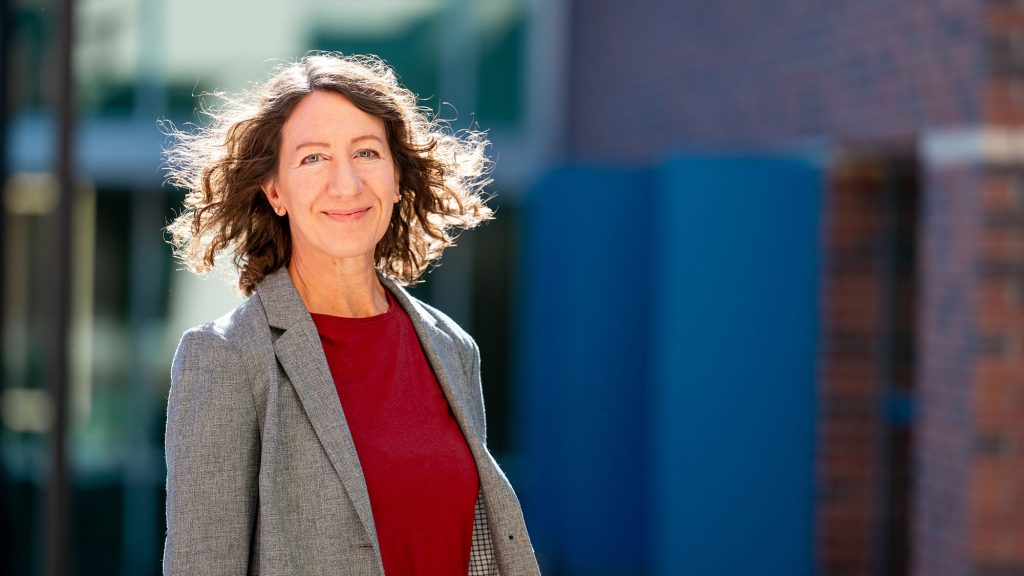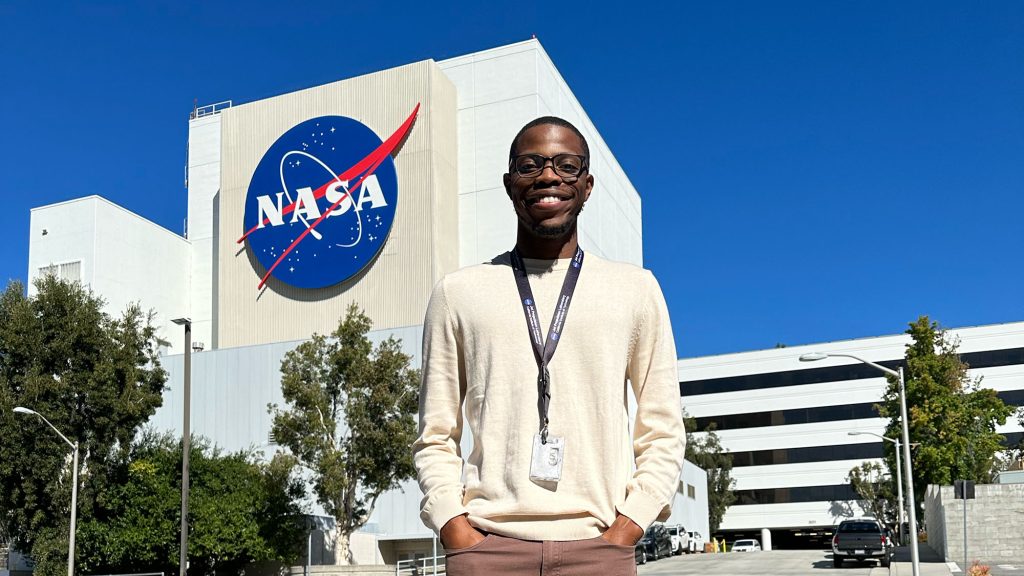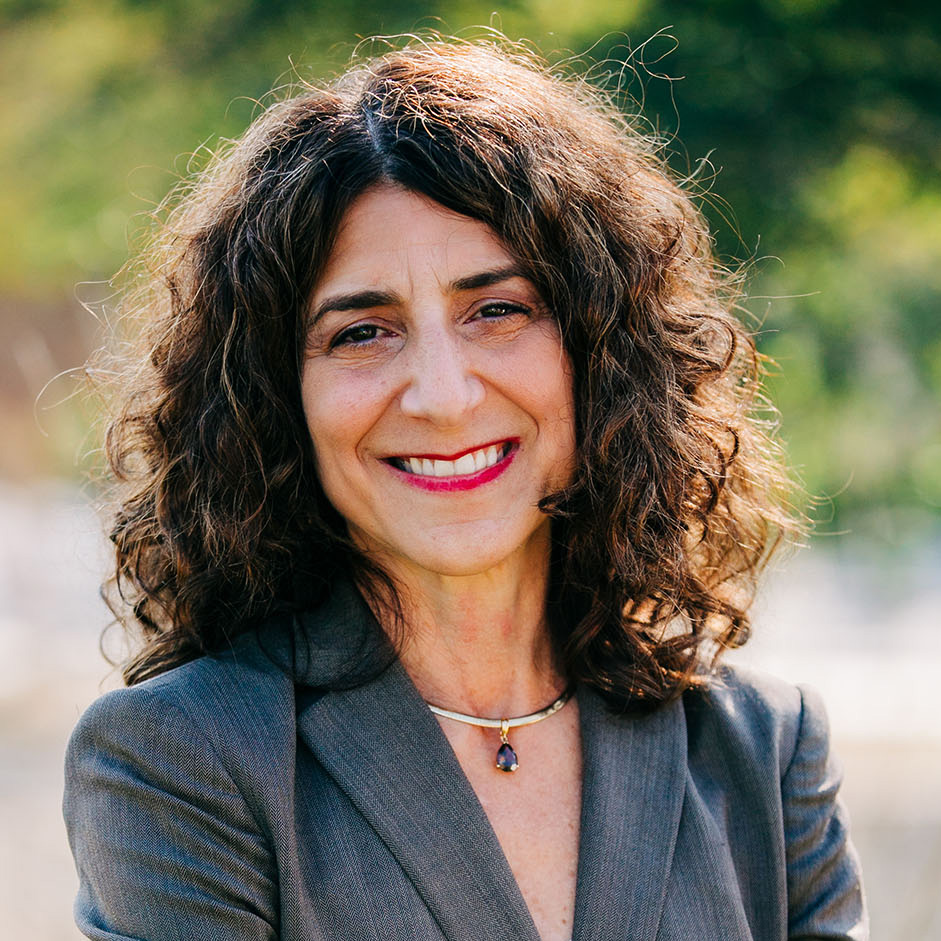Bits of your pants, shirts, socks and fleece jackets are polluting local waters. Cal Lutheran biology students have discovered this disturbing fashion dilemma as part of a scientific research project.
For the past four years, CLU biology professor Andrea Huvard, PhD, has guided dozens of students in a long-term research project: They are studying the presence of microfibers in the ocean, sediments and marine animals around Southern California.
Microfibers, a subcategory of microplastics, are tiny fibers that come from synthetic clothing made of polyester, acrylic and nylon (these materials represent about 60% of all clothes made around the world). When you clean these garments, the microfibers end up in a washing machine’s gray water, and ultimately the ocean, where they don’t break down.
The CLU biology students are learning how polluted local waters are, and what animals are ingesting these microfibers, among other things.
Huvard’s goal is to give her students an interesting, relevant research project that’s doable during their time at Cal Lutheran. The project raises awareness about pollution and gives the students an extensive, meaningful research experience as undergraduates.
“I pull them in when they are young and I train them,” she said. “I try to get them to go from beginning to end, from formulating hypotheses to developing methods, implementing those methods, collecting data, then analyzing data, writing and presenting.”
Microfibers, she said, are easy to measure and see under a microscope — “and they are everywhere.”
Alex Mazaheri, a junior majoring in biology, has been working on the project since his sophomore year. The microfibers study is his first experience working on a large research project.
“It’s super interesting. I feel we’re doing meaningful research,” Mazaheri said. “You get a lot of people who care about the subject, [and] you get to make a meaningful connection to the professor.”
Keury Ortez Hernandez, also a third-year biology major, said participating in the project has opened her eyes to the scope of the microfiber pollution problem, and made her more aware of not just what she wears, but also what she eats. She used to dine on mussels, but after learning about the presence of microfibers in mussels, she’s cut back.
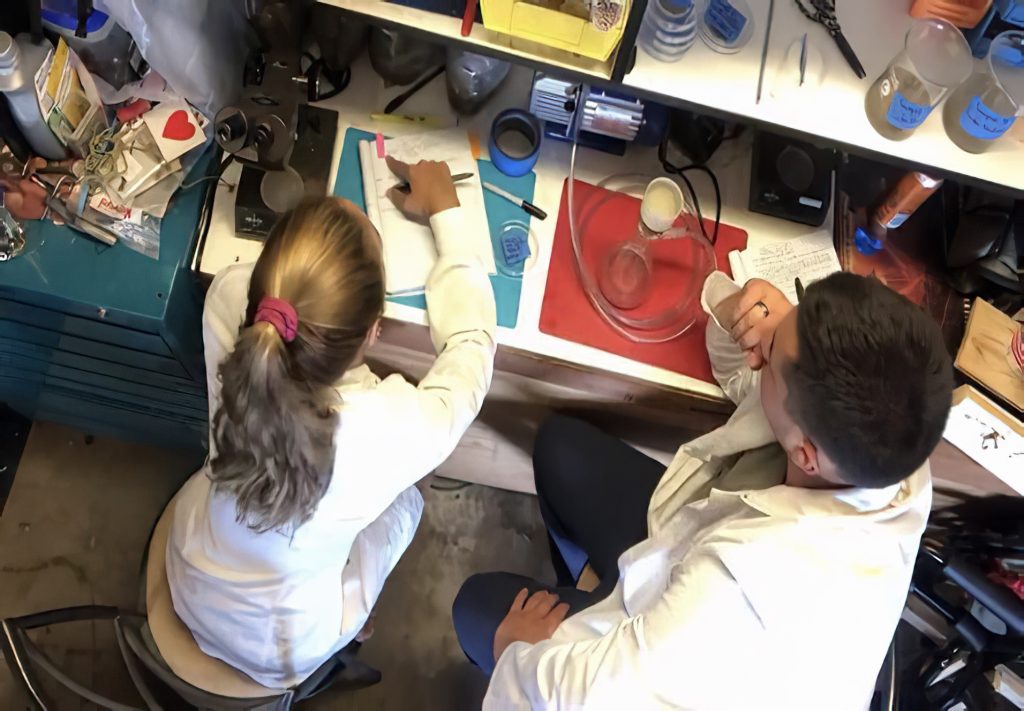
Students in the class collected water and sediment samples from locations such as Point Mugu, the Sycamore Canyon watershed, Channel Islands Harbor, Newport Harbor and Mission Bay. They also collected and examined microfibers in different fish, including anchovies, sardines and grunion, and in invertebrates such as mussels and local squid purchased from the fish market at Channel Islands Harbor.
Students were interested in which locations had the most microfibers and also how these microfibers move through marine organisms and the food chain. The animals can ingest microfibers directly from the water, from filtering that water, or from eating an animal that already ingested microfibers.
In Huvard’s large lab, teams of students dissected fish gills and treated the samples with hydrogen peroxide, which dissolves the tissue and leaves behind fibers that can be seen under a microscope.
“We had a student who was really interested in Newport Harbor and compared Newport Harbor with Channel Islands Harbor, and the open coast of Oxnard with the open coast of Newport,” Huvard said. “They found the harbors have way more microfibers than the open coast.”
According to Huvard, the presence of microfibers in local water, sediment and fish is not a danger to people “as far as we know.” Still, it’s important to raise awareness of water pollution and human habits of consumption that lead to pollution, she said.
Huvard requires that her students attend a professional conference to present their research. It’s difficult for undergraduates to get research published, but Huvard encourages them to try. One student, Chloe Mankin, co-published an article with Huvard in the September 2020 issue of the American Journal of Undergraduate Research on microfibers in mussels from Southern California harbors, beaches and supermarkets.
Keury Ortez Hernandez, her brother Steven Ortiz Hernandez and senior Ashley Rauda have been examining microfibers in grunion they collected at night at Topanga Canyon Beach while the fish were spawning on shore. During summer, they will begin collecting oysters farmed in California for the project, and hope one day to publish a paper on the subject.
“We’re just trying to show that they’re there, and maybe later down the line we can do an experiment on how toxic they are. Microfibers are carcinogens because the dyes that make up their color are carcinogenic.”
Alex Mazaheri
Mazaheri and his team have been investigating microfibers in squid. They found more microfibers in the guts than the gills, he said, and have seen fibers in a range of colors: blue, black, red, yellow, green and clear.
“There hasn’t been too much research with squids and microfibers,” Mazaheri said. “We’re just trying to show that they’re there, and maybe later down the line we can do an experiment on how toxic they are. Microfibers are carcinogens because the dyes that make up their color are carcinogenic.”
Perhaps the students’ research, he said, and that of other scientists, could be used as evidence leading to legislation that would tighten regulations on washing machines, or improve filtering to lessen water pollution.
It also could encourage consumers to ditch their polyester pants.
Amy Bentley, a professional journalist for 35 years, has written for media, businesses, government agencies, nonprofit organizations, and publications including the Ventura County Star and Beachcombing Magazine. She covers topics ranging from education, water and the environment to parenting, travel and healthcare.


